
| Quantity | 3+ units | 10+ units | 30+ units | 50+ units | More |
|---|---|---|---|---|---|
| Price /Unit | $152.12 | $149.01 | $144.35 | $138.15 | Contact US |
 Wanderer ETA M54 Electric Tilt and Back Focus Adjuster High Precision Astronomical Telescope Adjustment Accessory
$720.00
Wanderer ETA M54 Electric Tilt and Back Focus Adjuster High Precision Astronomical Telescope Adjustment Accessory
$720.00
 SkyTracker Pro 2025 EASY Version Portable Equatorial Mount with Polaris Beacon Coaxial Laser Indicator for iOptron
$357.73
SkyTracker Pro 2025 EASY Version Portable Equatorial Mount with Polaris Beacon Coaxial Laser Indicator for iOptron
$357.73
 SkyTracker Pro 2025 Version Portable Equatorial Mount High Precision Tracking Astronomical Accessory for iOptron
$326.64
SkyTracker Pro 2025 Version Portable Equatorial Mount High Precision Tracking Astronomical Accessory for iOptron
$326.64
Player One Ceres-M (AR0130) 1.2MP Mono Camera 65FPS Guiding Camera for Guiding Scopes and Imaging
Player One Astronomy guiding camera series, AKA Dwarf Planet Series, is designed for guiding and imaging. This series includes 3 sub-series, namely Ceres, Sedna and Xena.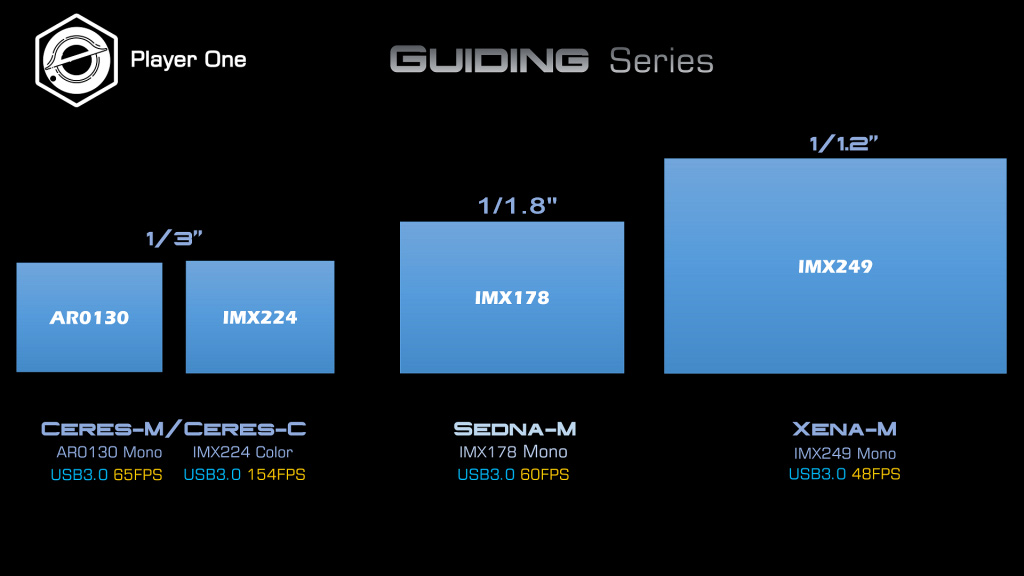
Product Description:
Ceres-M is a guiding camera developed by Player One Astronomy. It adopts the AR0130 1/3" format sensor for Aptina. The 3.75um pixel size accommodates a well depth of 18ke with a total of 1.2MP (the resolution is 1280*960), and the diagonal is 6mm.
Highlights:
Dwarf planet series is designed with a USB3.0 data port (500Mb/s), providing 10 times the speed of USB 2.0. This camera series can be used for guiding and imaging.
The diameter of Dwarf planet camera is 1.25". It can slide in the 1.25" holder of guiding scopes, making the whole setup shorter.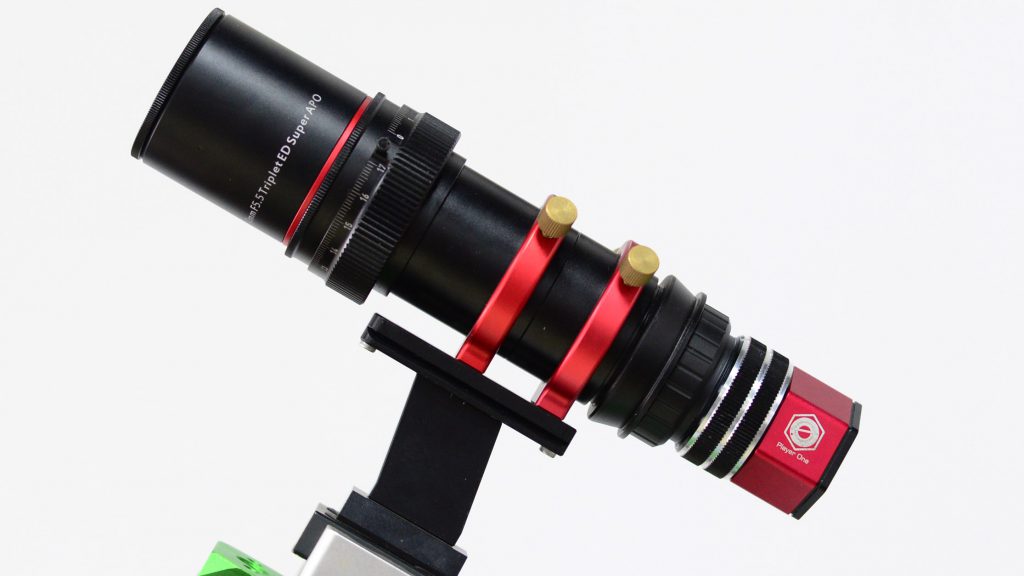
When used with a 5-100MM CS lens, the camera can also be used as a guider or a finder.
Features: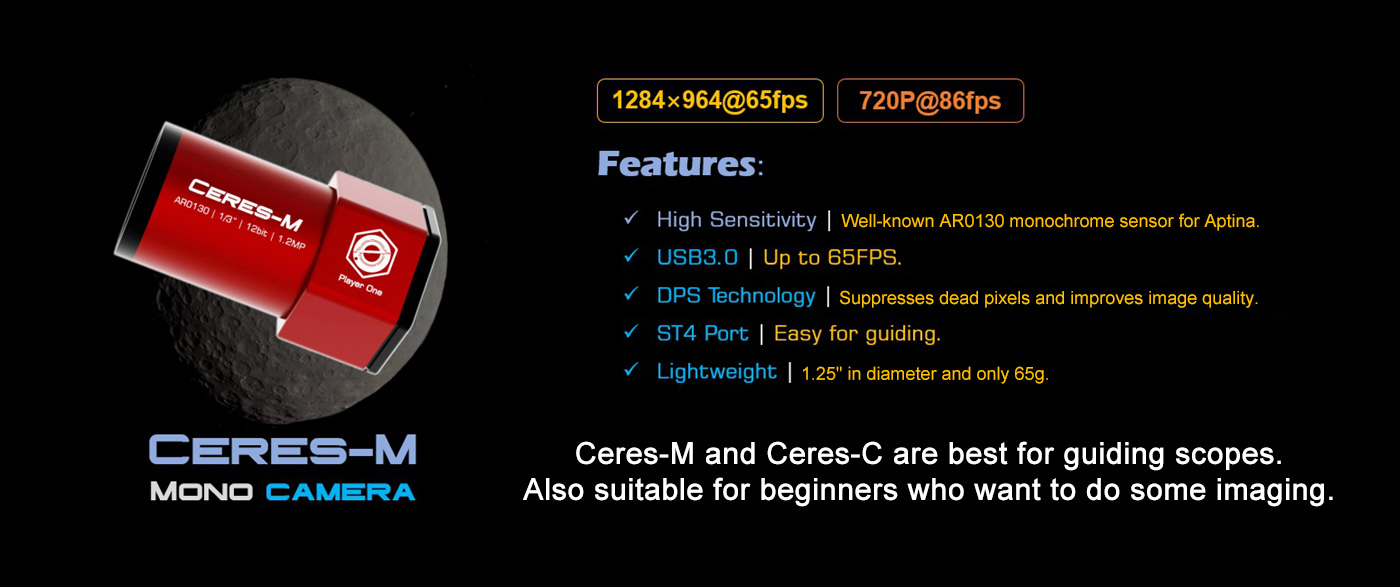
The naming of Player One guiding cameras is interesting. Guiding camera is smaller than planetary camera. That is the reason why we choose dwarf planet to name it.
The size of each dwarf planet to a certain extent represents the size of camera sensors. We will name Ceres with a 1/3" sensor camera, and for Xena, we will name it with a 1/1.2" sensor camera. All the names will be engraved on the housing of the cameras.
Download drivers and software: https://player-one-astronomy.com/service/software/
Download manuals: https://player-one-astronomy.com/service/manuals/
Cutting-edge Design
The guiding cameras developed by Player One Astronomy use technological regular hexagon to construct the main body line.
DPS Technology
The guiding cameras from Player One Astronomy have DPS (Dead Pixel Suppression) technology. The DPS can analyze many dark frames to find out those fixed abnormal pixels and record the map in camera memory. In imaging, each exposure frame and those positions of dead pixels will be given a median value according to the active pixels around the abnormal pixels.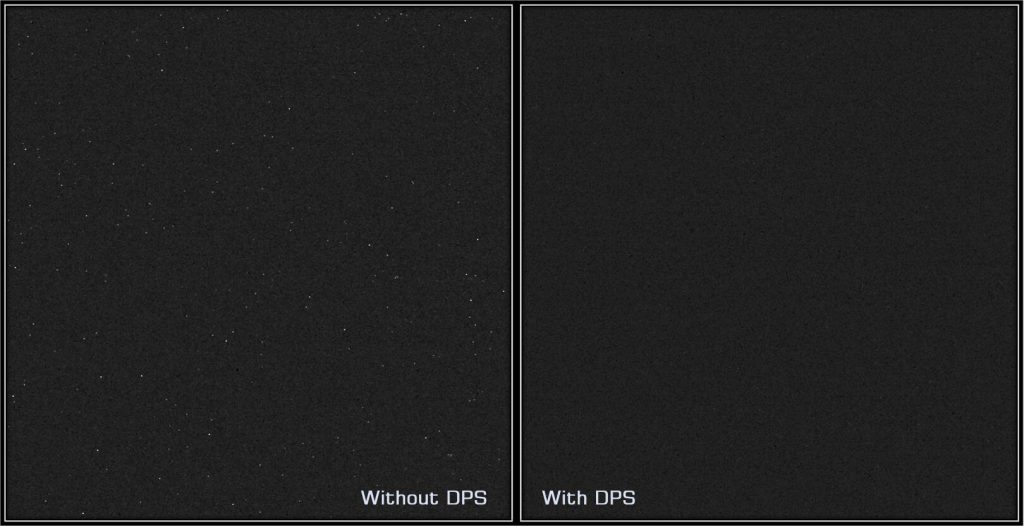
Over-voltage and Over-current Protection Mechanisms
Player One cameras ensure the safety of your camera and other equipment through over-voltage and over-current protection mechanisms.
Data Port
When the camera is connected to the USB3.0 interface and full-resolution preview is used, it can reach 65 FPS in RAW8 mode (10bit ADC). For recording images, the actual writing speed will be affected by the writing speed of the hard disk itself. When the hard disk writing speed is slow, the recording may not reach the theoretical speed. It is recommended that you use a high-quality solid state drive to record data to give full play to the performance of the camera.
Use an ST4 guide cable to connect the camera and the AUTO GUIDE port of the equatorial mount to do guiding.
Performance:
Readout Noise
Regarding readout noise, we solemnly promise that all values are obtained from actual tests. You can use the software for Sharpcap 4 for testing. SC4 has a function called Sensor Analysis, providing a very simple way to test readout noise.
We wrote a tutorial on website: https://player-one-astronomy.com/service/manuals/
After many rigorous readout noise tests, the Ceres-M camera can reach a low readout noise of 3.6e at a gain of 200.
If you are interested in readout noise testing, you can try it by yourselves because it is very simple.
QE Curve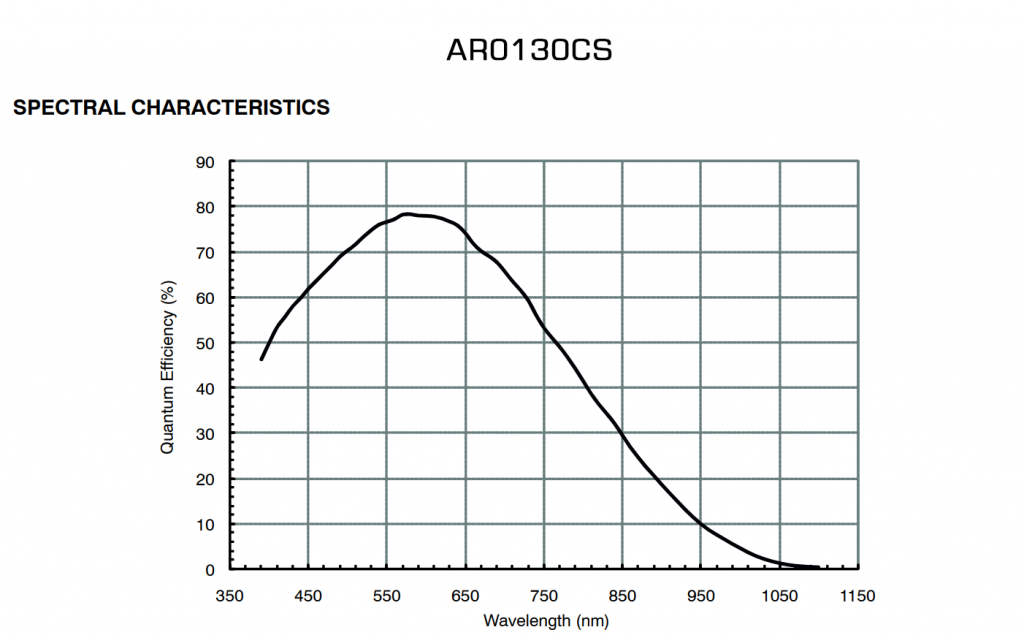
Mechanical Drawing: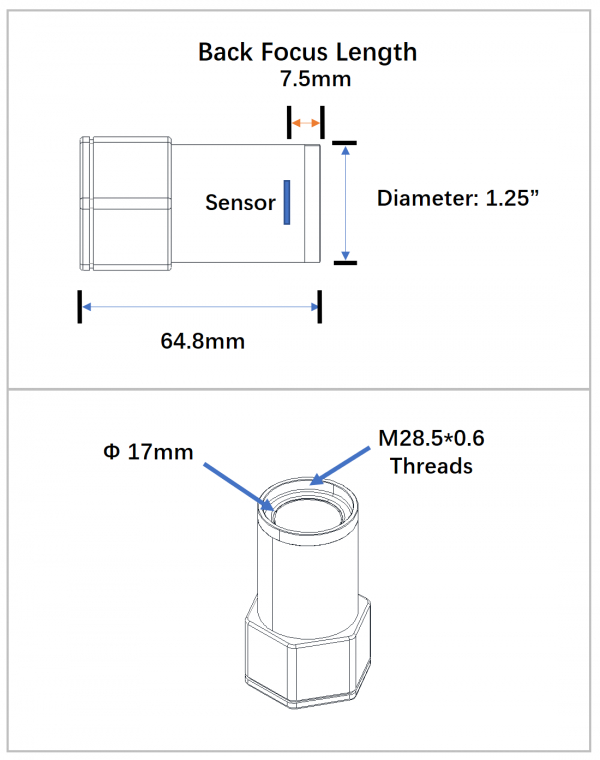

Package Included:
- 1 x Camera
- 1 x 2M USB3.0 cable
- 1 x 2M ST4 cable
- 1 x 1.25" extender
- 1 x 1.25" dust-proof cover
- 1 x Air blower
Packaging Details:
- G.W: 0.55kg